The fertile layer is humus located at a depth of up to 20 cm; decomposed remains of plants, microorganisms, insects, and animals remain in it. They decay and plants receive food.
Over time, nutrients become less, this reduces the yield of crops. To find out what condition the soil is on the site, take samples and do laboratory tests. The need for valuable substances for each culture is different. The nutrient layer is formed naturally and artificially.
Content
Fertility reduction
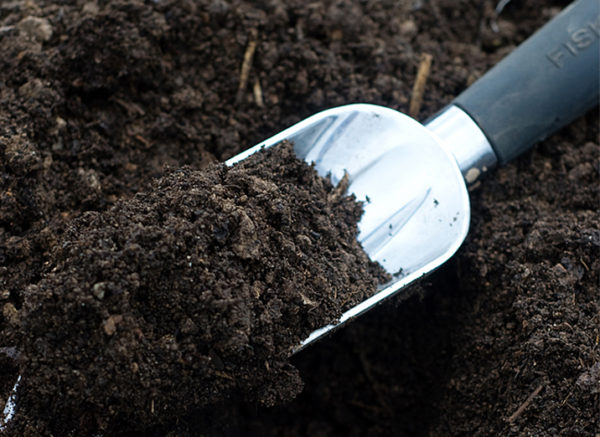 If you grow plants on the same bed for several years, the nutrients will decrease significantly. Plants constantly consume nutrients and over time, the soil is depleted. If fertilizers and mineral components are not added to the ground, soil depletion will occur.
If you grow plants on the same bed for several years, the nutrients will decrease significantly. Plants constantly consume nutrients and over time, the soil is depleted. If fertilizers and mineral components are not added to the ground, soil depletion will occur.
Fertility Improvement Methods:
- the application of mineral and organic fertilizers;
- mulching;
- rest for the earth;
- correct crop rotation;
- heat treatment;
- the use of worms;
- sowing mixed plants;
- growing green manure and medicinal herbs.
The application of organic fertilizers improves the condition of the topsoil. To solve the problem, you need to replenish stocks: 4-5 buckets of manure per 1 square, or 3 buckets of compost for digging in the fall. On light soil, mullein is added every two years, on heavy and medium - once every 3 years. Chicken droppings contain many valuable substances. It is used for composts - 1 part of litter and 10 parts of water.
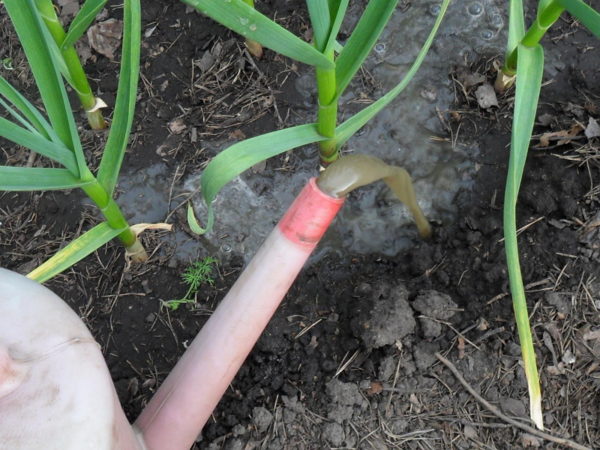 You may be interested in:
You may be interested in:To obtain nutrients, green plants are grown - green manure. Their powerful root system keeps the surface layer of the earth from destruction, helps to enrich it with nitrogen and inhibits the growth of weed grass. They are planted after harvest. Siderata is sown, depending on the plants planted. For example, rape is sown in front of carrots and beets, lupins are planted in front of tomatoes and cucumbers. These crops can be planted throughout the season.
Legumes are good siderates for depleted land. Perennials with a powerful rhizome pull nutrients to the surface from the deep layers of the soil. They loosen it, enrich it with humus, phosphorus, and lower acidity. Legumes should not be clipped before flowering, it is during this period that nodule bacteria form on the roots and replenish the soil with nitrogen. Cereal siderates (rye, oats, wheat) make up for the lack of humus.
The soil crumbles like dust
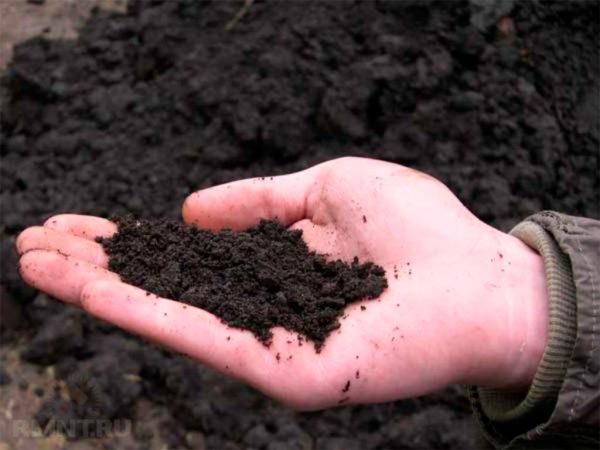 When vegetables are planted in one area that require too much nutrition, but do not fertilize, then the soil eventually not only depletes, but also turns into dust. For example, tomatoes, zucchini, cabbage, cucumbers consume many useful substances. Such a problem occurs when the surface is not mulched, while often digging the soil. As a result, moisture is poorly absorbed, dust is carried by the wind.
When vegetables are planted in one area that require too much nutrition, but do not fertilize, then the soil eventually not only depletes, but also turns into dust. For example, tomatoes, zucchini, cabbage, cucumbers consume many useful substances. Such a problem occurs when the surface is not mulched, while often digging the soil. As a result, moisture is poorly absorbed, dust is carried by the wind.
This condition also depends on the type of soil. If there is more sand in the area, then it dries quickly and does not retain moisture. Digging up sandy soil is recommended once a year.
To weight the top layer, 3 buckets of compost are added to the square of the earth. Stack fertilizer to a depth of at least 10-15 cm. This will also serve as food for vegetables.
So that the dust does not fly around the garden, the site is mulched with grass, straw, sawdust, tree bark. The coating protects against weathering, weeds, decomposing, it nourishes the earth.
Solid soil
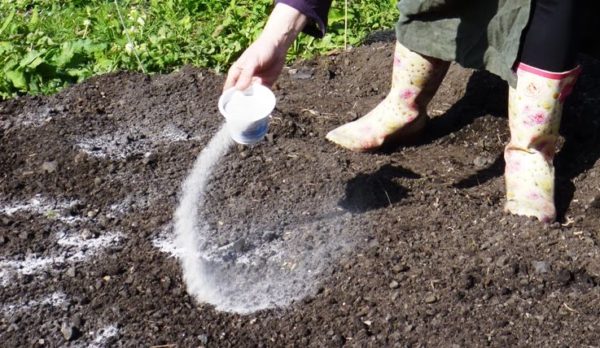 A dense gravel, which cannot be dug even when it is wet, may be due to poor maintenance or clay soil. On loam make digging at least 1 bucket of sand per square plot.
A dense gravel, which cannot be dug even when it is wet, may be due to poor maintenance or clay soil. On loam make digging at least 1 bucket of sand per square plot.
Getting out of the situation will help plowing the garden before the cold weather (10 cm in depth). Only earthen clods do not need to be broken and turned over. After freezing by spring, they will become loose.
You can run into the garden of rain or California worms. They loosen the soil. But if the worms do not like the new place, they will not remain in the beds. In order for the worms to linger for a long time, a decaying humus is needed. Mulch from rotted compost will not be superfluous.
Attract worms will help tincture of dandelions. For plant nutrition, 1 kg of grass stems or roots will be needed, they are poured with 10 liters of water. Insist 13-14 days, filter and dilute 1:10.
Acidic soil
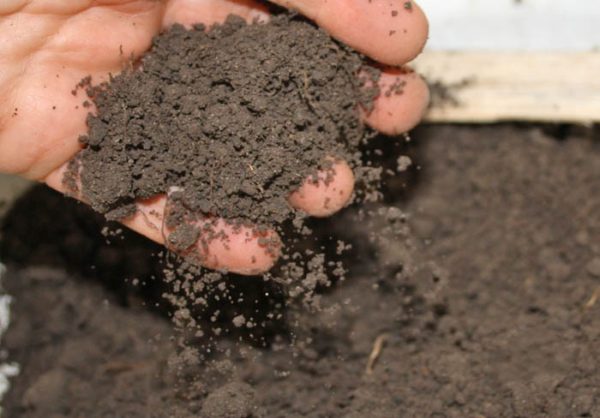 Improper watering changes the acidity of the soil. With soft water - acidity rises, with hard - decreases. Growing plants and mineral fertilizers increase acidity.
Improper watering changes the acidity of the soil. With soft water - acidity rises, with hard - decreases. Growing plants and mineral fertilizers increase acidity.
Liming the soil is the only way to solve the problem. Substances are added per 1 square meter depending on the acidity of the earth, the more acidic, the more alkalis are introduced:
- Wood ash - 0.2-0.4 kg;
- Slaked lime - 0.2-0.3 kg;
- Dolomite flour - 0.3-0.5 kg;
- Chalk - 0.1-0.7 kg.
Dolomite flour and ash, in addition to alkalizing action, contain many useful trace elements (calcium, magnesium) that nourish plants. If additional boron and copper fertilizers are added, the effectiveness of the substances increases. At full dose, the effect of liming lasts up to 8 years.
Some crops do not tolerate liming, so they should be planted a year after the procedure. Crops: tomatoes, pumpkin, beans, cucumbers, peas, carrots, celery, parsley. For deoxidation of soil green manure is planted after harvest: rye, oats, white mustard, phacelia.
Alkaline soil
Excess alkali in the earth is not a frequent occurrence. Usually this is improper agricultural technology, for example, if you overdo it when alkalizing the soil.
If the pH is above 7.5, then iron is not absorbed by plants. Greens turn yellow, development stops.
Mulch is made from peat, pine needles and bark of pine trees. Mulch after weeding weeds, loosening, fertilizing in spring or autumn.
Saline soil
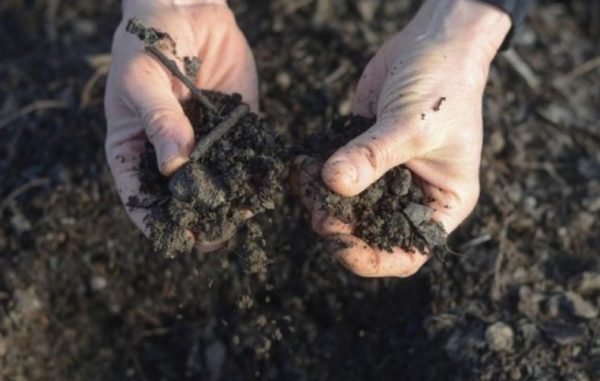 When white spots appear on the ground, this indicates salinity of the soil. The reason is that they added a lot of mineral additives and salted the soil. If the content of toxic salts is 0.15%, the yield loss is up to 20%, over 0.25% salinization of the soil - yield loss is up to 50-60%.
When white spots appear on the ground, this indicates salinity of the soil. The reason is that they added a lot of mineral additives and salted the soil. If the content of toxic salts is 0.15%, the yield loss is up to 20%, over 0.25% salinization of the soil - yield loss is up to 50-60%.
Water dissolves salt, plentiful watering (15 liters per square) helps in this situation. A drainage system is indispensable. But there is a problem - not all plants tolerate an excess of fluid, in addition, high humidity causes fungus.
Cultivation of crops whose rhizome loosens dense layers helps to make natural drainage. Millet, sweet clover, Sudanese grass, sorghum are planted.
After dissolving the salt, the surface is covered with peat. It is necessary to monitor the application of fertilizers, trying to prevent overfeeding.
Soil infection with fungi and insects
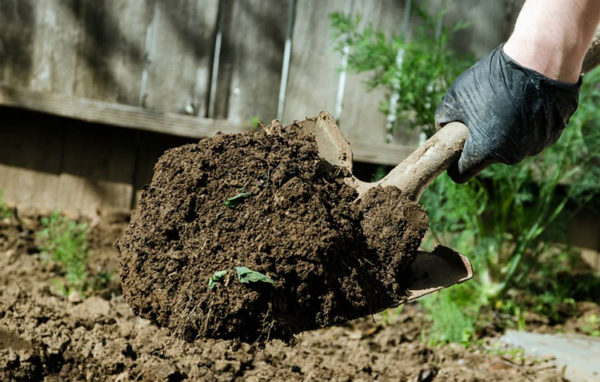 Population of the garden with pests and infections begins in the spring and is in full swing all summer.Larvae and eggs are in the ground all winter, so the only control method is to treat the garden with insecticides. Larvicides kill caterpillars and larvae. Ovicides act on the eggs of ticks and insects.
Population of the garden with pests and infections begins in the spring and is in full swing all summer.Larvae and eggs are in the ground all winter, so the only control method is to treat the garden with insecticides. Larvicides kill caterpillars and larvae. Ovicides act on the eggs of ticks and insects.
Digging the site in the fall without breaking the clods will help the birds find feed. Pests, and especially their larvae, will not be able to get back into the ground for wintering.
All weed grass, foliage, fallen branches must be removed from the site. Under them harmful insects can hide. Weeds and foliage are often infected with fungi.
To fight diseases, Alirin B preparations are used - microflora for the soil, which suppresses infections. Moreover, it is compatible with fungicides, insecticides and growth regulators. It is better to use chemicals without chemicals. Baikal EM-1, EM-5, added 20 days before the frost, heals the earth, suppresses phytopathogens, thanks to microorganisms.
Biofungicides - Trichodermin, Bactofit, Planzir, Fitosporin, Phytocide M are introduced into the upper layers of the earth after digging in the fall and spring.
If chemistry is indispensable, then 3-4 hazard class products are bought. After harvesting, Bordeaux 3% is sprayed. On an April dry day, a soil layer of 5-10 cm is covered with Oksihom 2% or a solution of copper oxychloride 4%. When planting seedlings in the pits bring Bravo, Hom or Quadris.
To protect against diseases, green manure is planted: mustard, radish, calendula, marigold. Their healing qualities protect neighboring plants from many diseases. To reduce soil moisture, plants that consume a large amount of liquid are needed: lupine, rye. Often used combined siderates, for example, legumes and cereals.
Soil with a red bloom
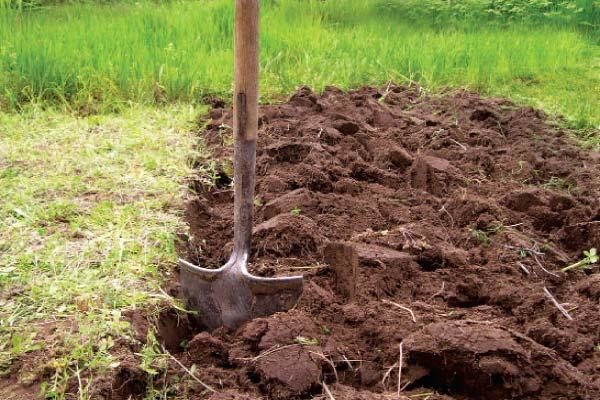 When watering the garden with hard water with a predominance of iron over time, the surface of the earth becomes covered with a rusty coating. Red veins appear on the plants. The second cause of rust may be a fungus.
When watering the garden with hard water with a predominance of iron over time, the surface of the earth becomes covered with a rusty coating. Red veins appear on the plants. The second cause of rust may be a fungus.
The earth is poured with boiling water in places where there are no plants. In autumn, the biological product Fitosporin-M is used. It destroys fungal infections. Plantations are watered only with settled, thawed or rainwater. There will be no benefit if the products are dissolved in chlorinated water.
 You may be interested in:
You may be interested in:The land is overgrown with moss
Moss grown in the garden may be the result of increased moisture, solid or acidic soil. Most often it appears in darkened places.
To remove excess fluid from the site, drainage grooves are made. Moss grows in places free of plants. To populate an empty place, plants are planted in the shade that feel calm without direct sunlight: fern, hydrangea, and forget-me-not.
Moss itself is torn out by hand. If it is difficult to deal with it, iron sulfate is used for processing - 50 ml per 10 liters of water. Such a volume is spent on 150 squares of land.
Moss can be used in landscape design, in areas free from garden crops. It is planted along garden paths and in rockeries.
Permanent digging damaged soil structure
Digging is prohibited in areas of wind and water erosion, on sandy soils, in marshy areas. You can not dig a garden where the land is overdried or too wet. If the soil is disturbed, then it will not be able to feed a large number of crops. Useful bioflora will die, this will lead to diseases and a decline in immunity in plants.
If you dig in the heat, then most of the beneficial microorganisms will die, the earth clods will dry out. Even further precipitation may not be enough to restore and saturate the fertile layer. Turning over the layers of the earth, bacteria that enrich the soil with nutrient components are destroyed.
Plowing is harmful to old arable soil or light soil.The soil contains little humus, it is easily blown away and carried by the wind. In this case, the fertile layer must be retained using the siderata rhizome.
Digging around fruit trees not only destroys the fertile layer, but also cuts the roots that feed the entire tree. Many fruit trees have roots close to the surface. Damage to the rhizome will cause the disease, so a chopper, a shovel can not be used in the garden, especially in near-trunk places.

 Superphosphate: what is it and how to apply it
Superphosphate: what is it and how to apply it What problems can be expected from siderats?
What problems can be expected from siderats? Secrets of the collection, storage and use of eggshells in the garden
Secrets of the collection, storage and use of eggshells in the garden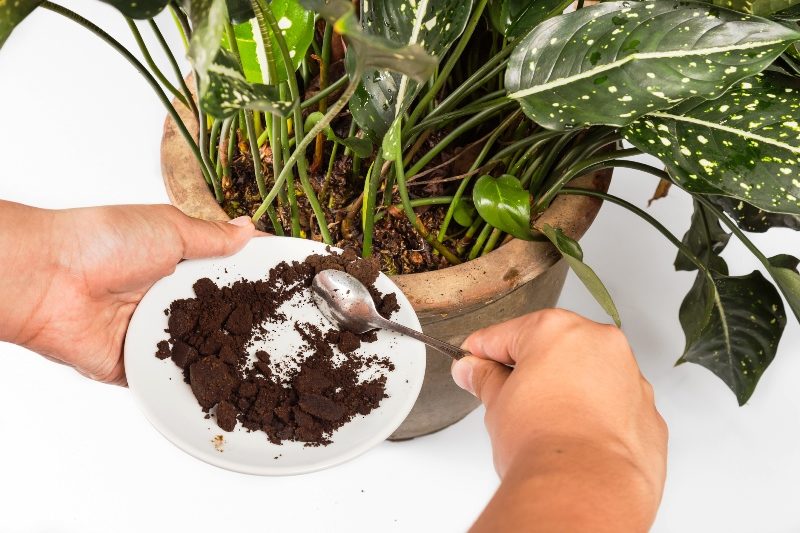 The most popular top dressing for indoor plants
The most popular top dressing for indoor plants